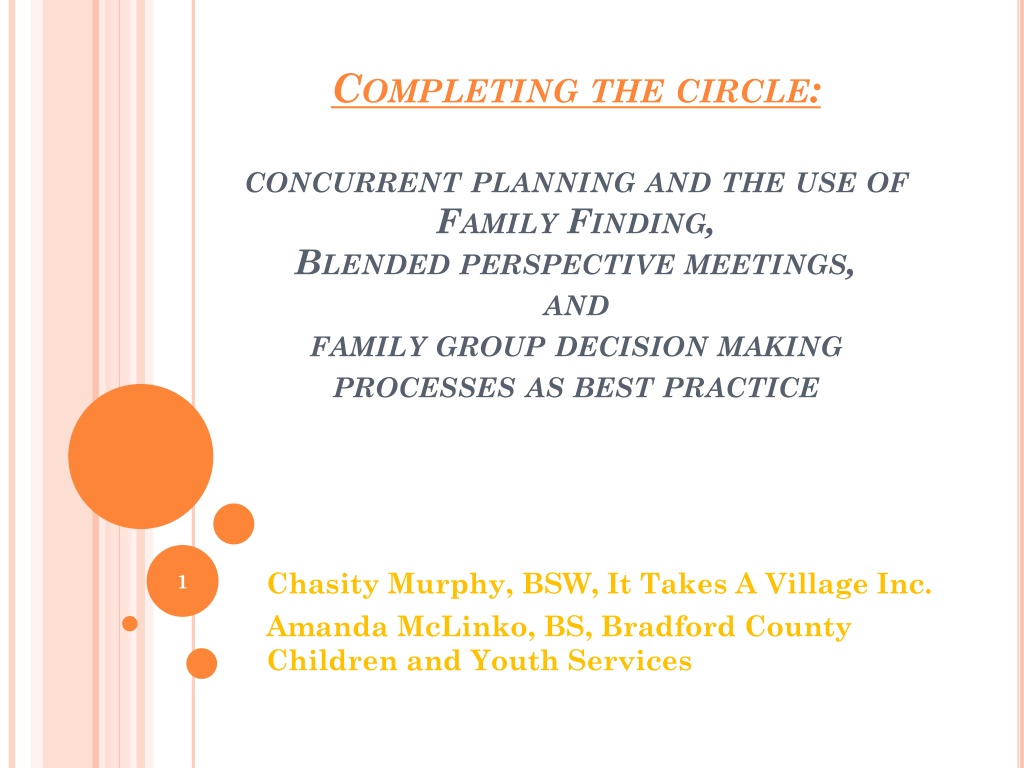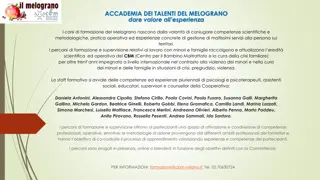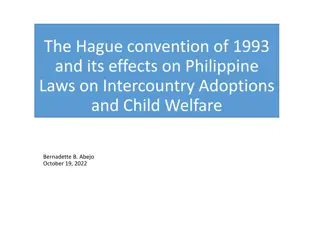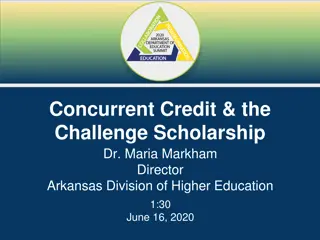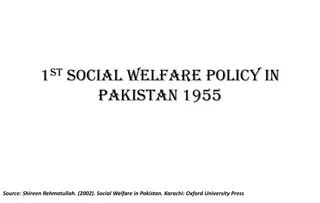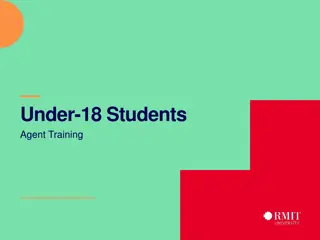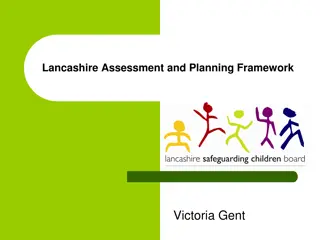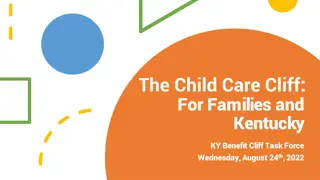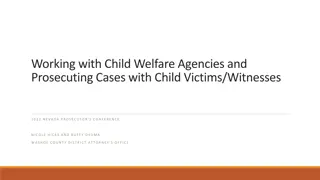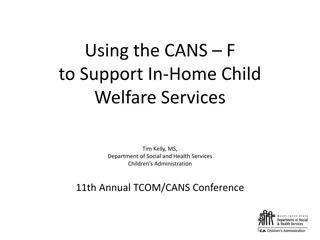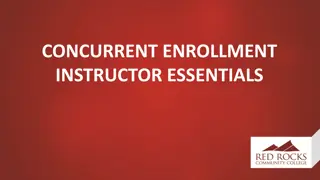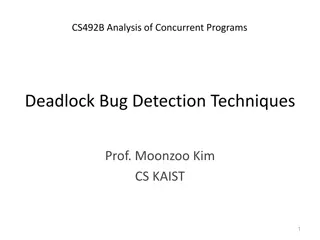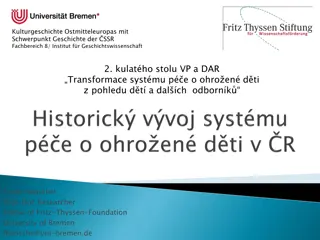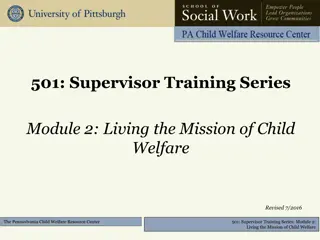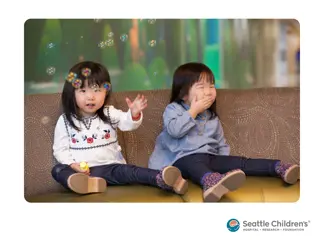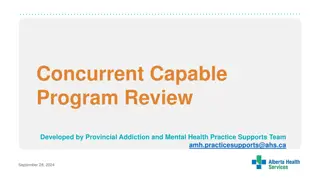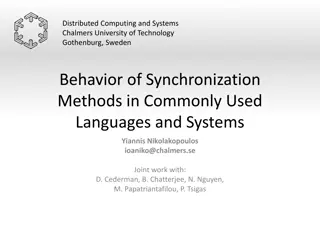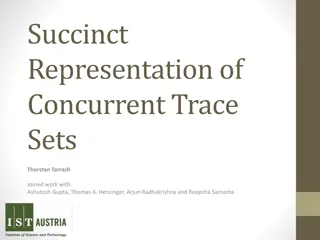Enhancing Child Welfare Through Concurrent Planning and Family Engagement
This paper explores the implementation of concurrent planning and family engagement strategies in child welfare services, focusing on practices such as family finding, blended perspective meetings, and family group decision-making processes. It discusses the importance of involving relatives and kin in permanency planning, as mandated by the Adoption and Safe Families Act of 1997, and highlights the significance of ongoing family connections for children in the child welfare system. The case study from Bradford County, PA, showcases how these best practices can support improved outcomes for children and families involved in child welfare services.
Download Presentation

Please find below an Image/Link to download the presentation.
The content on the website is provided AS IS for your information and personal use only. It may not be sold, licensed, or shared on other websites without obtaining consent from the author. Download presentation by click this link. If you encounter any issues during the download, it is possible that the publisher has removed the file from their server.
E N D
Presentation Transcript
COMPLETING THE CIRCLE: CONCURRENT PLANNING AND THE USE OF FAMILY FINDING, BLENDED PERSPECTIVE MEETINGS, AND FAMILY GROUP DECISION MAKING PROCESSES AS BEST PRACTICE Chasity Murphy, BSW, It Takes A Village Inc. Amanda McLinko, BS, Bradford County Children and Youth Services 1
BRADFORD COUNTY, PA Population 62,622 1,161 square miles Approximately 2 hours across county Median household income is 46,963 13.3 % below the poverty level State level is 13.3% 2
BRADFORD COUNTYHUMANSERVICES Children and Youth Services Intellectual Disabilities Mental Health Drug and Alcohol Daycare 3
BRADFORD COUNTY CHILDRENAND YOUTH SERVICES Serving 7 School Districts 5 Supervisors 2 Intake Screeners 7 Intake investigators/CPS investigators 7 On-going caseworkers 2 LSI Paralegals/SWAN 1 Weekend On-call worker 1 Eligibility worker 1 Director 3 Secretaries 1 Weekday On-call worker 4
STACKINGFOR SUCCESS Family Group Decision Making Conference Blended Perspective Meeting Family Finding 5
FAMILY FINDING-ADOPTIONAND SAFE FAMILIES ACTOF 1997 Requires annual permanency hearings, notice of reviews and hearings, and the opportunity for foster parents and relatives providing care to be heard. Builds upon the role of relatives when children are placed in the child welfare system. The tenets of ASFA allow for relatives to provide permanency. States are also required to initiate termination of parental rights (TPR) procedures for children who have been in foster care for the 15 of the most recent 22 months. Exceptions include: The child is living with relatives. A compelling reason exists why TPR is not in the child s best interest. Services consistent with the permanency plan were not provided. Mandates the Secretary of Health and Human Services to submit reports on the achievement of child welfare outcomes and on the use of kinship foster care. 6
FAMILY FINDING-FOSTERING CONNECTIONS LEGISLATION This article is intended to ensure that family finding occurs on an ongoing basis for all children entering the child welfare system. This article is also intended to promote the use of kinship care when it is necessary to remove a child from the child's home in an effort to: (1) Identify and build positive connections between the child and the child's relatives and kin. (2) Support the engagement of relatives and kin in children and youth social service planning and delivery. (3) Create a network of extended family support to assist in remedying the concerns that led the child to be involved with the county agency. Ongoing diligent efforts between a county agency, or its contracted providers, and relatives and kin to: (1) Search for and identify adult relatives and kin and engage them in children and youth social service planning and delivery. (2) Gain commitment from relatives and kin to support a child or parent receiving children and youth social services. Family finding shall be conducted for a child when the child is accepted for services and at least annually thereafter, until the child's involvement with the county agency is terminated or the family finding is discontinued in accordance with section 1302.2 7
CONCURRENTPLANNING o A process of working towards one legal permanency goal while at the same time establishing and implementing an alternative permanency goal and plan worked on at the same time (concurrently) to move children/youth more quickly to a safe and stable permanent family. o A process which involves concurrent rather than sequential permanency planning efforts. http://www.fcu.pitt.edu/files/Concurrent%20Plan%20 Bulletin.pdf 8
CONCURRENTPLANNING CONTINUED FOUR MAIN GOALS OF CONCURRENT PLANNING To promote the safety, permanency and well- being of children and youth in out of home care; To achieve timely permanency for children and youth through early permanency decisions; To reduce the number of moves in the foster care system for children; and To engage families and relatives early and foster significant relationships between children in out of home care and their family/kin. 1. 2. 3. 4. 9
REFERRAL PROCESS Family Finding Referred from intake until placement Referred annually if the family remains open with the agency or the children continue to be in placement Blended Perspective Meeting Referred if the children are at a high risk of placement or are already in placement Family Group Decision Making Conference Referral is made anytime Prevent court involvement Close the case Find relative placement Reunification or Identify supports to assist the family 10
FAMILY FINDING TOOLS Mobility mapping Family tree Facebook - social media Whitepages.com Google - police briefs/obituaries Pictures Face to face contacts Accurint searches Cell phones 11
BLENDED PERSPECTIVE MEETING Introductions/referring workers brief summary Child/Youth s identifying information Strengths Needs Connect-o-gram Determine the purpose of the Family Group Decision Making Conference Meal Time 12
CORE COMPONENTSOF CONCURRENT PLANNING Full disclosure to all participants in the case planning process; Family search and engagement; Family Group Decision Making/Family Group Conferencing/Teaming; Child/family visitation; Establishment of clear timelines for permanency decisions; Transparent written agreements and documentation; Committed collaboration between child welfare agencies, the courts, resources families, service providers and other stakeholders; and Specific recruitment, training and retention of resource families. 1. 2. 3. 4. 5. 6. 7. 8. 13
STACKINGFORSUCCESSREDUCES BARRIERS TOEFFECTIVE CONCURRENT PLANNING o Family Group Decision Making allows the family to have ownership and helps keep children with in there own family/kin when possible. 14
CHASITY MURPHY, IT TAKES A VILLAGE SUPERVISOR/FAMILY FINDING WORKER CMURPHY@ITAVINC.COM AMANDA MCLINKO, BRADFORD COUNTY CYS SUPERVISOR MCLINKOA@BRADFORDCO.ORG 16
